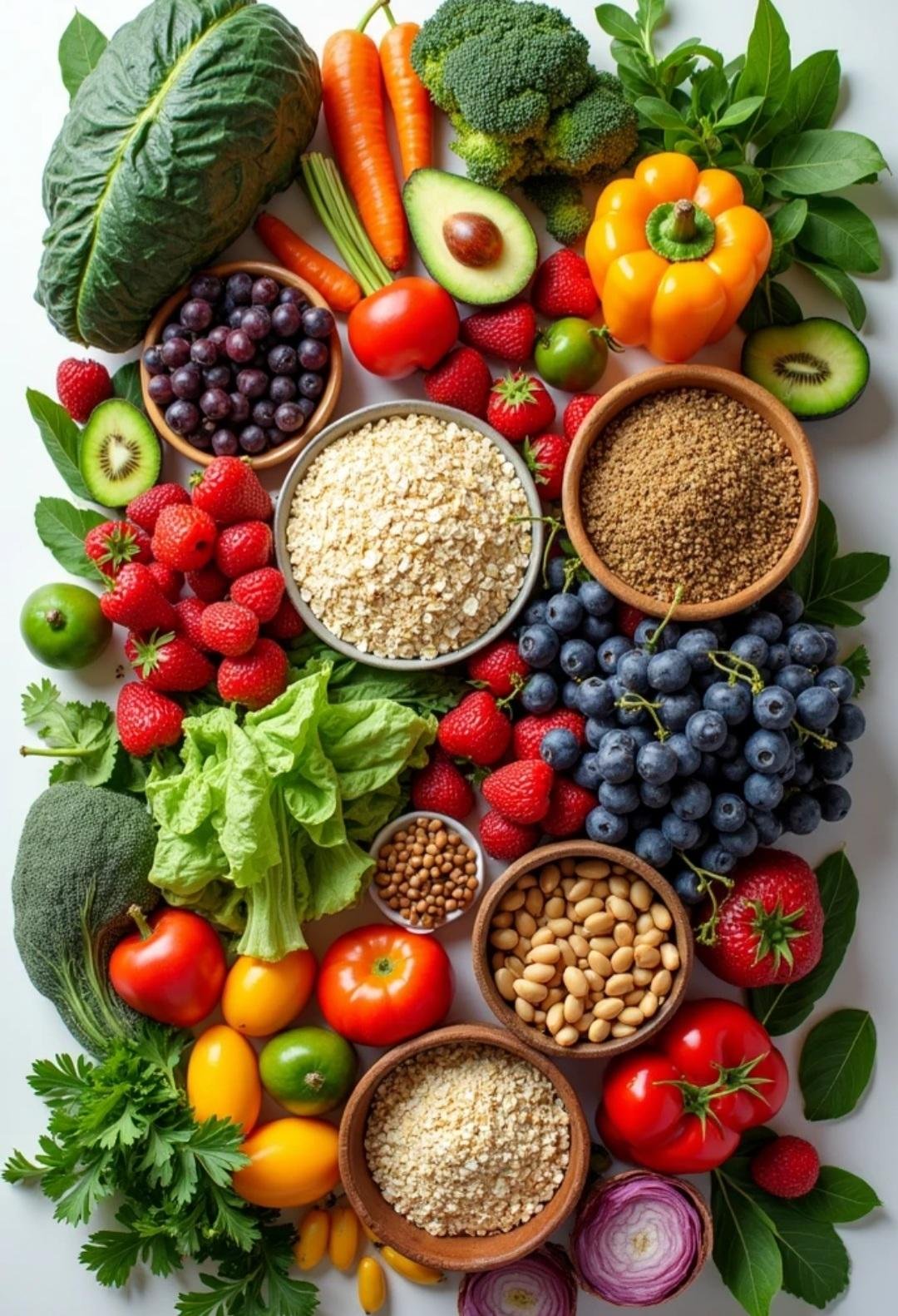Revitalize Your Life: Experts Proven Tips for Adopting Healthy Eating Habits

Establishing healthy eating habits can often feel overwhelming, especially with the abundance of information available. However, making sustainable dietary changes doesn’t have to be complicated. This comprehensive guide offers unique, easy-to-follow tips backed by research and expert advice to help you develop healthy eating habits that last.
Understanding Healthy Eating

Healthy eating is about nourishing your body with nutrient-dense foods while enjoying the process. According to Dr. David Katz, founder of the True Health Initiative, it’s essential to focus on balance, incorporating a variety of foods, including fruits, vegetables, whole grains, lean proteins, and healthy fats.
Importance of Nutrition

Research from the Harvard School of Public Health emphasizes that a well-balanced diet can help prevent chronic diseases, boost energy levels, and improve overall well-being. By focusing on nutrient-dense foods, you can fuel your body effectively and enhance your quality of life.
Easy Tips to Start Healthy Eating Habits
Here are practical, research-backed tips that are often overlooked, which can help you establish and maintain healthy eating habits:
1. Plan Your Meals

Meal planning is a powerful tool for making healthier choices. A study published in the American Journal of Preventive Medicine indicates that individuals who plan their meals tend to consume fewer calories and make healthier food choices.
– How to Do It: Dedicate time each week to plan your meals. Create a shopping list to ensure you have the necessary ingredients.
2. Start with Small Changes
Instead of attempting a complete diet overhaul, focus on small, manageable changes. Research shows that incremental changes lead to long-term success in maintaining healthy habits.
– Ideas for Small Changes:
– Gradually replace sugary drinks with water or herbal teas.
– Introduce one extra serving of fruits or vegetables to your meals each day.
3. Cook at Home More Often
Cooking at home allows you to control ingredients and portion sizes. According to a study in Public Health Nutrition, individuals who cook more meals at home tend to consume fewer calories and have healthier eating patterns.
– Get Started: Look for simple recipes that use fresh ingredients. Start with meals that require minimal preparation, such as stir-fries or salads.
4. Mind Portion Sizes
Understanding portion sizes can significantly impact your eating habits. Dr. Ellen Vora, a holistic psychiatrist, recommends being mindful of portion sizes to avoid overeating.
– Tip: Use smaller plates and bowls to help control portion sizes. Aim for half your plate to be filled with vegetables, a quarter with lean protein, and a quarter with whole grains.
5. Snack Smartly
Choosing healthy snacks can contribute to a balanced diet. The Journal of the Academy of Nutrition and Dietetics suggests that healthy snacking can help maintain energy levels and curb hunger between meals.
– Healthy Snack Ideas:
– Fresh fruit with nut butter.
– Greek yogurt topped with berries.
– Hummus with vegetable sticks.
6. Stay Hydrated
Dehydration can affect mood and cognitive function. Research published in the Journal of Nutrition indicates that mild dehydration can lead to fatigue and reduced concentration.
– Hydration Tips: Aim for at least 8 cups (64 ounces) of water daily. Consider carrying a reusable water bottle to track your intake.
7. Emphasize Whole Foods
Whole foods are typically more nutrient-dense than processed alternatives. A study from the American Journal of Clinical Nutrition found that diets rich in whole foods lead to improved health outcomes.
– Whole Foods to Include: Fruits, vegetables, whole grains, legumes, nuts, and seeds should be the foundation of your diet.
8. Educate Yourself About Nutrition

Understanding nutrition is crucial for making informed food choices. Research indicates that increased nutritional knowledge correlates with healthier eating habits.
– Resources for Learning: Follow registered dietitians on social media or visit reputable websites like the USDA and the World Health Organization to gain insights into nutrition.
9. Practice Mindful Eating

Mindful eating involves being present during meals and savoring each bite. Dr. Michelle May, author of “Eat What You Love, Love What You Eat,” emphasizes that mindfulness can enhance satisfaction and reduce overeating.
– How to Practice: Eat without distractions, chew slowly, and appreciate the flavors and textures of your food.
‐ Expert Tip: Once you take a bite, put your cutlery back on the plate until you finish chewing. This practice allows your stomach to signal when it’s full. Studies show that eating too quickly and without mindfulness can lead to overeating, which is linked to a range of health issues, including obesity and acidity. In fact, research indicates that 50 to 60% of people who eat rapidly may face such health problems.
10. Set Realistic Goals

Setting achievable goals can help maintain motivation. The SMART criteria—Specific, Measurable, Achievable, Relevant, and Time-bound—can guide you in setting effective dietary goals.
– Example: Aim to incorporate one serving of vegetables into each meal for the next month.
Unique and Often Ignored Tips for Healthy Eating
Beyond the foundational tips, here are ten additional pieces of advice that are easy to implement but frequently overlooked, supported by health experts:
1. Soak Your Nuts
Soaking nuts can improve digestibility and nutrient absorption. Dr. John Berardi, a nutrition expert, states that this process helps remove enzyme inhibitors and phytic acid, making nuts more beneficial.
2. Avoid Mixing Different Family Fruits
Eating different family fruits together can lead to digestive discomfort. Ayurveda suggests consuming fruits from the same family or eating them separately to optimize digestion.
3. Refrain from Eating Fruits After Meals
Eating fruits immediately after meals can lead to fermentation in the stomach, potentially causing bloating. Ayurveda recommends spacing fruit consumption away from meals, especially in the evening.
4. Incorporate Proper Hydration
Hydration should be part of your diet. Consuming sufficient water supports digestion, nutrient absorption, and overall health.
5. Add Seeds to Your Diet
Incorporate seeds like flax seeds or chia seeds into meals for added nutrition. Nutritionist Rachel Beller notes that these seeds can easily be mixed into various dishes, providing healthy fats and fiber without altering the flavor significantly.
6. Prioritize Nutrients from Foods Over Supplements
Aim to get vitamins and minerals from your diet rather than relying on supplements. Research in the Annals of Internal Medicine shows that whole foods provide a complex array of nutrients that supplements can’t replicate.
7. Opt for Natural Sweeteners
Avoid white sugar and choose natural sweeteners like jaggery or dates in moderation. These alternatives offer more nutrients and a lower glycemic index, promoting better blood sugar control.
8. Replace One Tea with Herbal or Green Tea
If you drink tea multiple times a day, consider replacing one cup with herbal or green tea. These options are rich in antioxidants and can offer health benefits without added sugars.
9. Diversify Your Food Choices
Keep your meals exciting by trying a variety of healthy foods. Include snacks like fox nuts, roasted gram, or savory mixtures of oats and nuts to prevent dietary boredom.
10. Create Your Own Spice Blends
Instead of relying on store-bought spice powders, make your own using whole spices. This ensures freshness and flavor while allowing you to control ingredients, as noted by nutritionist Joy Bauer.
Overcoming Common Obstacles
Here are some common obstacles people face when trying to eat healthier and tips to overcome them:
1. Busy Lifestyle
A hectic lifestyle can make healthy eating challenging.
– Solution: Batch-cook meals on weekends and store them in portioned containers. Prepare healthy snacks in advance for busy days.
2. Social Situations

Dining out can lead to unhealthy choices.
– Solution: Review menus ahead of time and choose healthier options. Don’t hesitate to request modifications, like dressing on the side or opting for a salad instead of fries.
3. Cravings for Unhealthy Foods

It’s natural to crave indulgent foods.
– Solution: Allow yourself to enjoy treats in moderation. Find healthier alternatives that satisfy your cravings, like dark chocolate instead of milk chocolate.
Don’t be too harsh on yourself, this may even lead to excessive intake of unhealthy foods.
Tracking Your Progress
Keeping track of your eating habits can help maintain accountability and identify areas for improvement. Consider keeping a food diary to note what you eat, how you feel, and any cravings. This can provide valuable insights into your eating patterns.
Conclusion

Adopting healthy eating habits is a journey that requires patience, education, and self-compassion. By following these tips, understanding the fundamentals of nutrition, and overcoming common obstacles, you can create a lifestyle that promotes better health and well-being. Remember, it’s about progress, not perfection, and every small change you make counts.
As you make progress, it’s essential to celebrate your achievements, no matter how small. Treat yourself to a new cookbook, enjoy a day off to explore new foods, or share your journey with friends or family to inspire them.



